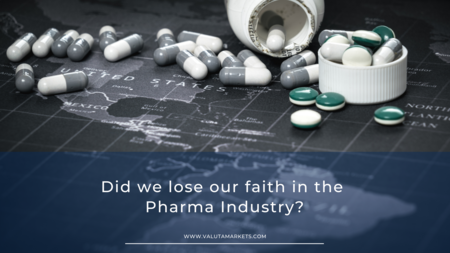Manipulative patent litigation, price hikes, the rampant opioid epidemic, and most recently, the pandemic have all steadily but surely tainted the public’s view of big pharma. This article seeks to establish whether the public has indeed lost faith in this industry.
Before the pandemic set in, bringing a wave of deaths and lockdowns, trust in Big Pharma was still dwindling. Over the years, people have accused and blasted the industry for tax avoidance and inflating prices to maximize profits. Most think that this is why it is among the most profitable industries globally.
In 2020, the global revenue of the pharma industry clocked in at $1.27 trillion. Since then, this figure has probably risen, especially with the billions generated from the distribution of COVID-19 vaccines worldwide. This industry is massive, which is understandable. After all, it provides access to life-changing and life-saving medicines and vaccines, often a matter of life and death.
The evolution of pharma marketing
It is easy to assume that the loss of trust in the industry is unwarranted. After all, painting Big Pharma as just a greedy money-minting industry sounds quite far-fetched. To better understand such opinions, it is necessary to explore how medical marketing has evolved over the years as it has played a significant role.
Marketing has always been part of the medical industry. However, it has grown into a sophisticated high-dollar machine that touches every aspect of the overall healthcare system in recent years. According to a report published by husband and wife Steven Woloshin and Lisa Schwartz in the Journal of American Medical Association, America’s marketing budget rose to $29.9 billion in 2016, from $17.7 billion in 1997.
Having served at the Dartmouth Institute of Health Policy and Clinical Practice as co-directors of the Center for Medicine and Media, they revealed that this budget covered health services, disease awareness campaigns, lab testing, and drug marketing. According to Woloshin, the simple fact that there was such widespread promotion and marketing in the industry stood out.
Most of the growth in marketing is in direct-to-consumer marketing. In 1997, direct marketing only accounted for 12% of the total expenditure. Fast forward to 2016, it represented about a third of total spending. Still, the majority of marketing dollars are spent in the background, promoting drugs to hospitals and health care providers through:
- Face-to-face calls.
- Free medicine samples
- Free meals and travels
- Speaking fees.
Because of all these incentives, doctors continue to write more prescriptions and increase patient appointments. Marketing also incentivizes health practitioners and patients to opt for the newer, more expensive, name-brand medicine instead of older but cheaper alternatives that have a proven track record.
Keeping all this in mind, it comes as no surprise that a non-profit known as the Lown Institute discovered that Americans, primarily older adults, suffer adverse consequences because of medical overload. Because of resulting complications, such patients have to be hospitalized.
Looking at this, it is more clear why consumers are increasingly skeptical of the pharma industry. There are numerous more studies detailing how the industry takes advantage of unwitting patients to increase their profit margins at the expense of their health.
Confirmation of pharma’s trust issues
Extensive studies confirm the notion that global faith in the pharmaceutical industry is waning. The public relations firm Edelman’s Trust Barometer in 2018 is a good reference. Their survey on the general healthcare sector, including biotech, pharma, insurance, consumer health, and hospitals, revealed a decline in global trust.
Only 63% of respondents trusted the sector to do the right thing, down from 65% in 2015. Trust in the entire healthcare sector dropped in 17 out of the 28 markets studied. Sharp declines were prevalent among the informed public in developed markets like France, Canada, the US, and Germany.
The pharmaceutical industry was the least trusted within the health sectors, scoring just 55% worldwide. It fell far below the most trusted areas: hospitals at 72% and biotech at 62%. Most respondents blamed the high cost of health care on Big Pharma.
For almost one decade, pharma has remained in the mid-50s. That is worrying, considering it is an industry tasked with saving lives. The trend seems much worse when you compare it to industries such as tech, which are doing better.
Take away
The pharmaceutical industry is an integral part of the health sector. It plays an important role in developing and innovating drugs and solutions to save and improve lives. However, it is still the duty of governments globally, especially those that are homes to big pharmaceutical firms, to ensure that the industry is regulated. This necessity is more apparent now that the world has been through a pandemic. The actual industry must also work towards regaining public trust and focus on improving the quality of medical innovations. Their efforts might help the general public see them as more than a business feeding off people’s illnesses.

